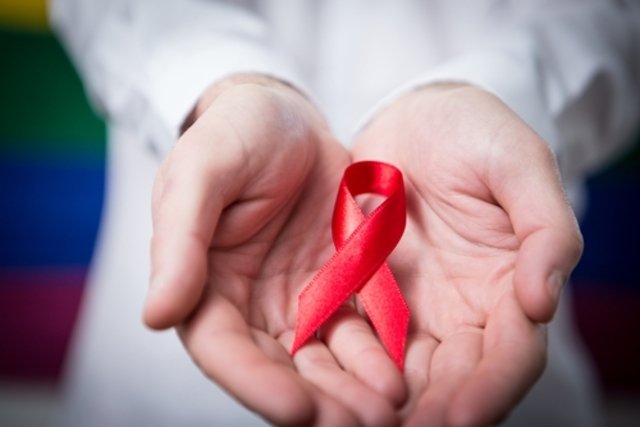AIDS is the last stage of infection with the HIV virus and is characterized by a significant decrease in the activity of the immune system, which can result in the appearance of symptoms such as bloating, persistent cough, night sweats and rapid weight loss. Furthermore, as there is less action from the immune system, the person is at greater risk of developing other infections, such as candidiasis, for example.
To confirm AIDS, it is recommended that a blood count be carried out to check the white blood cell count, which in this case is lower, indicating less activity of the immune system.
HIV transmission occurs through risky behavior, such as sexual intercourse without a condom or sharing needles. The test to detect the virus must be carried out 40 to 60 days after the risk behavior, as before this period the concentration of the virus may not be detected in the test. Understand better when to take the HIV test.
To learn more about this disease, watch the video:
Main symptoms of AIDS
The main symptoms of AIDS include:
- Persistent fever;
- Prolonged dry cough and scratchy throat;
- Night sweats;
- Swollen lymph nodes for more than 3 months;
- Headache and difficulty concentrating;
- Pain in muscles and joints;
- Tiredness, fatigue and loss of energy;
- Rapid weight loss;
- Oral or genital candidiasis that does not go away;
- Diarrhea for more than 1 month, nausea and vomiting;
- Reddish spots and small red dots or sores on the skin.
These symptoms usually appear 8 to 10 years after initial infection with HIV, but they can also appear earlier, especially if there is a condition that seriously affects the immune system, leaving it weakened.
At this stage, where there are symptoms, opportunistic diseases such as viral hepatitis, tuberculosis, pneumonia, toxoplasmosis or cytomegalovirus usually also appear.
Although it may take several years for the first symptoms of AIDS to appear, some people may experience symptoms of HIV infection about 2 weeks after they are initially infected. However, these symptoms are very similar to those of the flu and often go unnoticed. See the symptoms that may indicate a possible HIV infection.
To find out whether you may be infected with the HIV virus, you must first identify whether or not you have engaged in any risky behavior such as having sex without a condom or sharing contaminated syringes. See the main risk behaviors for HIV.
Afterwards, you can be aware of the appearance of symptoms such as fever, general malaise, sore throat or dry cough, which tend to appear up to 2 weeks after infection. However, the most accurate way to identify the infection is by taking a blood test for HIV, which should be done 40 to 60 days after the risk behavior, and repeated after 3 and 6 months. Read more about what to do if you suspect AIDS.
Make an appointment with the nearest infectious disease specialist to receive more guidance on diagnosis and treatment, if necessary:
Taking care of your health has never been easier!
How is AIDS treated?
AIDS is a disease that has no cure and, therefore, its treatment must be maintained for life, with the main objective of treatment being to strengthen the immune system and combat the virus, controlling and reducing its quantity in the blood.
The ideal is to start HIV treatment before AIDS manifests itself. This treatment can be done with a cocktail of different antiretroviral drugs, such as Efavirenz, Lamivudine or Viread, which are provided free of charge by the government, as well as all the necessary tests to assess the progression of the disease and the viral load.
Bibliography
- U.S. DEPARTMENT OF HEALTH & HUMAN SERVICES.. AIDS Case Definition. Available at: <https://clinicalinfo.hiv.gov/en/glossary/aids-case-definition>. Accessed on March 14, 2022
- U.S. DEPARTMENT OF HEALTH & HUMAN SERVICES. Symptoms of HIV. Disponível em: <https://www.hiv.gov/hiv-basics/overview/about-hiv-and-aids/symptoms-of-hiv>. Acesso em 08 mar 2022

Sign up for our newsletter and stay up to date with exclusive news
that can transform your routine!
Warning: Undefined array key "title" in /home/storelat/public_html/wp-content/plugins/link-whisper-premium/templates/frontend/related-posts.php on line 12
Warning: Undefined array key "title_tag" in /home/storelat/public_html/wp-content/plugins/link-whisper-premium/templates/frontend/related-posts.php on line 13





